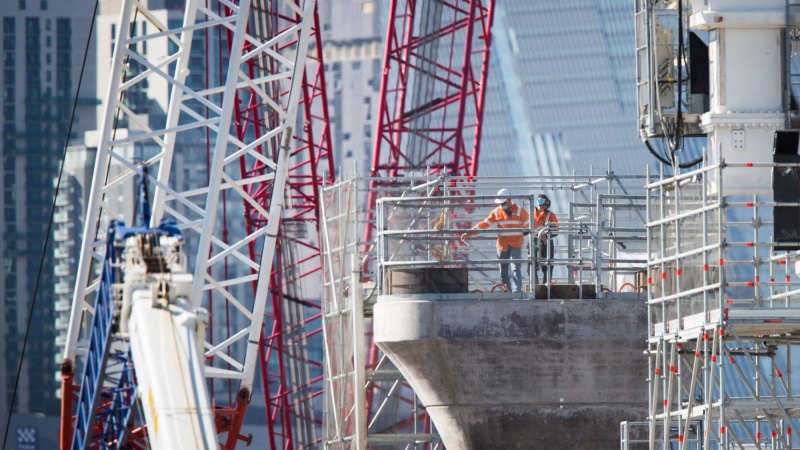
It’s more than a year since Daniel Andrews, in one of his last acts as premier, set a target for Victoria to build 800,000 new homes by the end of the decade. Now the Allan government, with its plans to upzone for more housing around 50 train and tram centres is finally getting serious about meeting that goal. We have long known that Melbourne needs to build more homes in the inner and middle-ring suburbs where most Victorians most want to live .
The Victorian government has unveiled its plans for more development in middle-ring suburbs. Credit: Jason South Done well, a more densely populated Melbourne can be more vibrant, walkable and service-rich – much more so than a highway-ringed satellite suburb 50 kilometres from the CBD. It’s also much cheaper.
Infrastructure costs for a new home in an established suburb can be between half and a quarter as much as the same home on the urban fringe. Yet, a lack of new housing in established areas has pushed young and low-income families towards the urban fringe, even as population has stagnate d in many established suburbs , especially in Melbourne’s south-east. State and local government planning and heritage laws have long made it hard to build more housing – from townhouses to apartments – in most of Melbourne’s most desirable suburbs.
These rules reflect the interests of existing – often wealthy – residents who would prefer that their neighbourhoods stay as they are. Would-be residents, who might live in new housing in these well-located suburbs if only it were built, find themselves without much say. The Allan government’s latest plans are an essential step towards fixing this policy failure.
The government plans to change zoning laws around 50 new “train and tram activity centres” to permit new apartment buildings, concentrated in the south-east. Projects that meet a streamlined set of planning requirements will be “deemed to comply”, bypassing local council approval processes. This announcement builds on previous government plans to upzone near 10 other well-connected activity centres.
Although key details are yet to be finalised, it’s clearly a major step in the right direction. Grattan Institute modelling shows that if Victoria hits the government’s housing targets, rents could be 13 per cent lower than they otherwise would be by 2034. Renters would save about $14 billion over the decade, and almost $3 billion in 2033-34 alone, compared with business as usual.
While opponents will raise concerns about changes to neighbourhood character, ultimately there is no way for Victoria to achieve its housing goals without boosting housing supply in established suburbs. In the face of local opposition, similar efforts in NSW to boost density around train stations have proved popular with the electorate . Urban density, if done well, can add to neighbourhood amenity while preserving local green space.
And despite some high-profile examples of poor-quality buildings, new apartments are usually of higher quality than the older housing they replace. Yet Victoria faces another problem: despite rising demand, the number of new apartment commencements is hovering around decade lows. New apartment approvals have stagnated because of spiralling construction costs, the high cost and limited availability of workers to build new homes, and the higher cost of borrowing to buy apartments off the plan following 13 successive interest rate rises.
Research by Reserve Bank of Australia economists in 2019 showed that apartment construction is especially sensitive to interest rate cycles. The government’s announcement on Monday to extend existing stamp duty concessions for first-home buyers to the purchasers of any off-the-plan apartment for 12 months will get more housing built quicker, albeit at a heavy cost to the state budget. However, past research shows that stamp duty concessions – much like first home owner grants – are often captured by developers via higher prices for their apartments, rather than benefiting end purchasers.
A better bet would have been for the government to invest in social housing construction, which could have boosted housing supply at the same time as meeting an urgent social need. And in the future, the government should pursue more substantial tax reform, by removing stamp duty entirely and replacing it with a broad-based land tax. Until now, the Andrews and Allan governments have talked a good game on housing.
Now those words are finally being backed by action. More please. Brendan Coates and Matt Bowes are housing policy experts at the Grattan Institute.
The Opinion newsletter is a weekly wrap of views that will challenge, champion and inform your own. Sign up here ..








